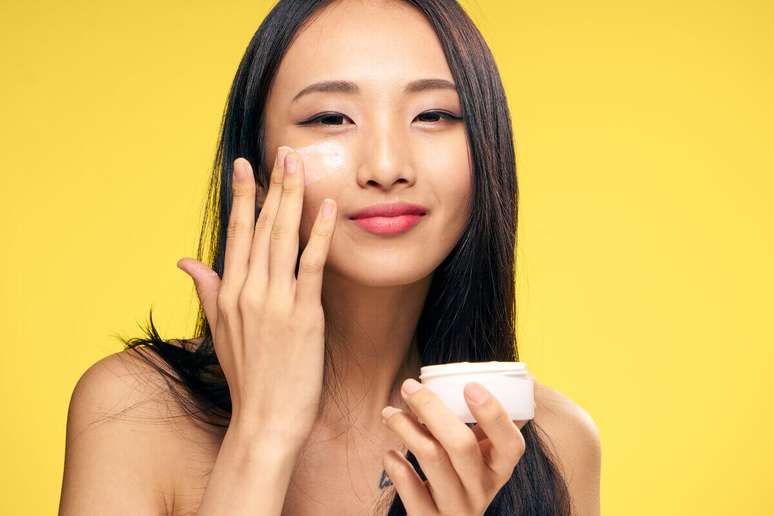The dermatologist explains how a little skin care is important this time of year
Lower winter temperatures, coupled with poor skin care habits, can lead to serious damage to skin health. This is because, due to the cold, many people mistakenly tend to neglect hydration and nutrition at this time of year, which naturally tends to dry out the skin. With that in mind, dermatologist Dr. Paola Pomerantzeff, a member of the Brazilian Society of Dermatology, explains what mistakes you should avoid in order to keep your skin beautiful and lush. I wait!
html[data-range=”xlarge”] figure image img.img-6765922604bd913a9ef1a547f3cbb43coqwnljv9 { width: 774px; height: 516px; }HTML[data-range=”large”] figure image img.img-6765922604bd913a9ef1a547f3cbb43coqwnljv9 { width: 548px; height: 365px; }HTML[data-range=”small”] figure image img.img-6765922604bd913a9ef1a547f3cbb43coqwnljv9, html[data-range=”medium”] figure image img.img-6765922604bd913a9ef1a547f3cbb43coqwnljv9 { width: 564px; height: 376px; }
1. do not use sunscreen
Ultraviolet radiation, even in winter, causes photoaging and possible spots. “Photoaging includes sagging, as well as long-term can cause skin cancer. Even in winter indoors, the use of sunscreen is essential. Ultraviolet radiation passes through glass and thin fabrics (curtains) and can reach the skin in the same way,” explains Dr. Paola Pomerantzeff. Those with melasma should worry even more, relying on filters that protect against heat and visible light.
two. Forget about moisturizers
With lower temperatures and drier air, skin tends to get drier, according to the dermatologist. “It can even become red and flaky. This is because our skin starts producing less amounts of ‘natural oiliness.’ This dryness needs to be compensated for by intense hydration,” he says.
Again according to Dr. Paola Pomerantzeff, due to dryness, there are more possibilities for fine lines to appear. “The best moisturizers have low-molecular-weight hyaluronic acid (small molecules that can cross the skin barrier and penetrate the innermost layers of skin for hydration),” she recommends.
It is also out of the question to forget the eye contour cream, even more so in this period in which colds tend to make the face more “tired”. Still about the hydration, we must never forget the skin of the feet, hands and body in general.
“Our body has fewer sebaceous glands than our face and, therefore, dries out even more. The neck and décolleté can and should receive the same moisturizing and protective cream as the face, as do the hands. As for the rest of the body, you should use a body moisturizing cream to be applied daily after a bath. Feet can be hydrated with specific creams (even more powerful, if necessary)”, explains Dr. Paola Pomerantzeff.
3. Using too many retinoids
Retinoids are great for healing skin and preventing photoaging, according to the dermatologist. “They promote cell renewal, even out tone, and improve texture. Because they cause skin photosensitivity, fall and winter are excellent times to use,” he says.
However, care must be taken when using them, as they tend to dry out the skin. “If they are used without guidance, in an exaggerated way, they can lead to extreme dryness, including irritation and redness of the skin. The ideal is to seek dermatological guidance to find out the ideal concentration of the active and the frequency for your skin” , he says the doctor .
4. take a very hot bath
The “peeling” bath in winter, “sauna” style, is delicious, but can cause harm to the body skin health. “Hot water removes the skin’s protective barrier, the lipid mantle, even more so if you overuse soap. The ideal is therefore a quick, hot bath! says Dr. Paola Pomerantzeff.

5. drink little water
In the cold, many people are not thirsty and end up reducing their water intake. “This is very bad. We have to maintain water hydration of at least 2 liters of water per day. If our body becomes dehydrated, it takes water from the periphery (even the skin) to compensate. With this, our skin ends up become dehydrated and without Lips can also become drier,” reports the dermatologist.
6. Abuse of alcoholic beverages
It is common to increase the consumption of wines and even spirits in winter, however, excess alcoholic beverages are dangerous and lead to dehydration of the body as a whole. “An excess of alcohol leads to an inflammatory process of the skin with the possibility of premature aging (appearance of wrinkles, sagging and reduction of collagen),” explains the specialist.
But the dermatologist also explains that it’s not necessary to be 100% without it alcoholic beverage. “A glass of red wine a day is allowed as long as it is accompanied by a glass of water. In this way we maintain hydration and ingest the natural antioxidants of wine (resveratrol) and relax. The antioxidants in wine are able to fight free radicals in the skin. Our skin appreciates it,” says Dr. Paola Pomerantzeff.
7. eat too much sweet
In winter, people tend to eat more sweets. “And, lately, there are a lot of people discounting their anxiety from high sugar intake, and with that, their skin suffers. Foods with a high glycemic index lead to the process known as glycation. In this process, the collagen fibers undergo harmful changes. The result is looser and wrinkled skin,” informs the practitioner.
According to the dermatologist, an alternative to avoid excesses with sweets are chocolates with 70% cocoa. “This chocolate has a lower level of sugar and fat and has a high concentration of cocoa, which is a powerful natural antioxidant. It is good for our skin, as long as it is consumed in moderation,” explains the expert.
By Guilherme Zanette
Source: Terra
Ben Stock is a lifestyle journalist and author at Gossipify. He writes about topics such as health, wellness, travel, food and home decor. He provides practical advice and inspiration to improve well-being, keeps readers up to date with latest lifestyle news and trends, known for his engaging writing style, in-depth analysis and unique perspectives.









